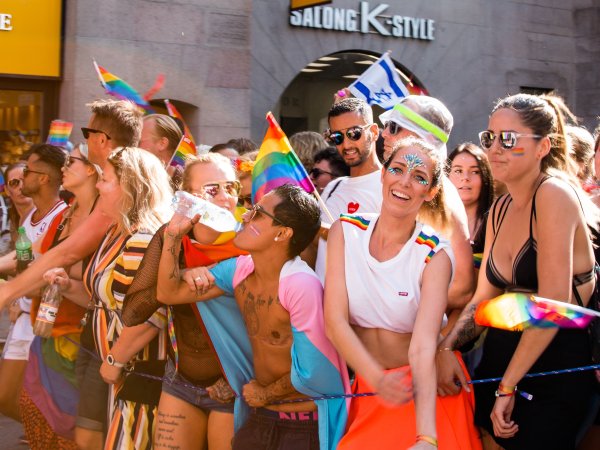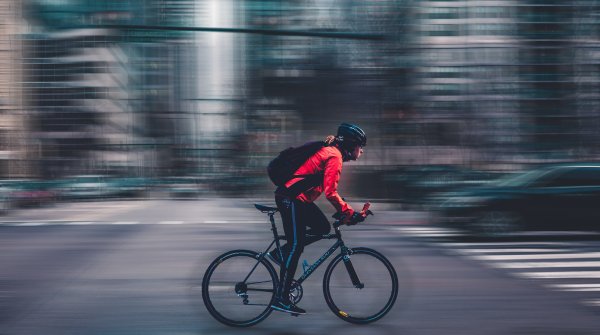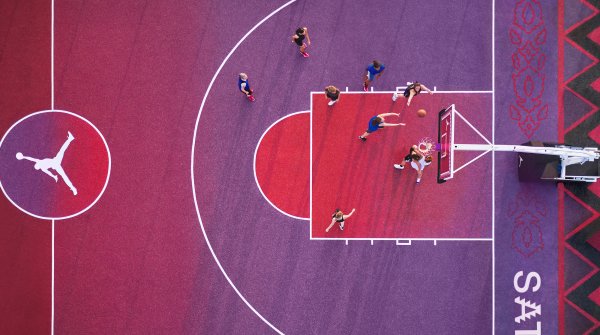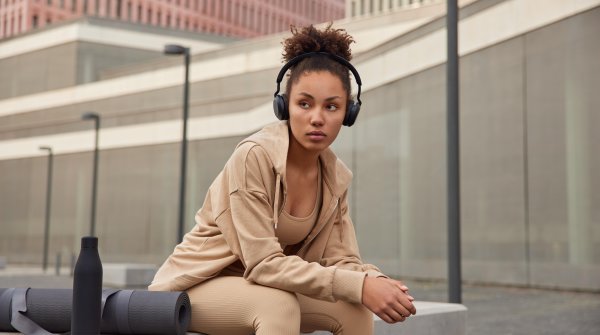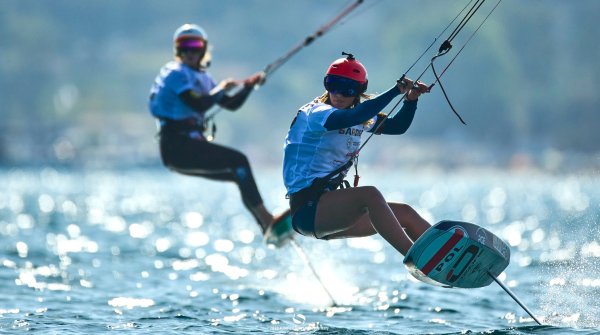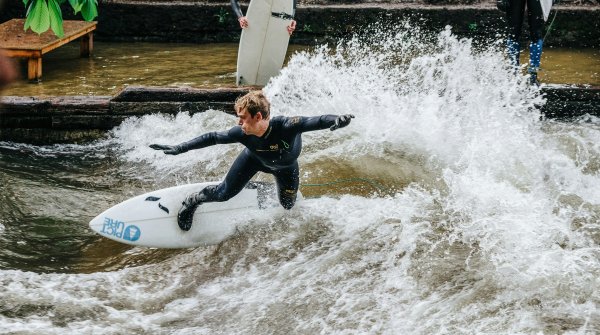- Problem Zone: Homosexuality in Men's Sports
- Stereotypical image of men in sports
- Discrimination prevents participation
- Transgender rules are being tightened
- LGBTQ+ acceptance in sports: big things start small
- Self-determination bill – no solutions for sports
- Hopefuls make the case for anti-discrimination
- Gender inclusive: sports are for everyone!
A youth coach said Søren Dahl that he would never be successful as a swimmer if he came out as gay. A few years later, the Dane mentions this story in a TikTok video - with images of his participation in the 2016 Summer Olympics in Brazil playing in the background. So happy ending? For the openly gay Dahl, maybe. But the story of queer athletes' struggle against discrimination is far from over.
The Olympics are a model for the entire world of sport and are praised for the hugely important contribution to queer visibility in elite sport. But while progress is celebrated on one side, regressions give pause for thought on the other. Because (especially) in competitive sports, significant distinctions are made among LGBTQ+ athletes: queer does not always equal queer.
At the 2021 Summer Games in Tokyo, eight times more women than men officially counted themselves as LGBTQ+ athletes*. To date, only a few active male athletes have come out publicly about their homosexuality: Besides Olympic swimmer Dahl, for example, it's his friend and professional football player Carl Nassib, the only known homosexual player in the NFL since coming out in June 2021. In men's soccer, too, the open treatment of homosexuality is a problem. While soccer was the sport with the most out queer players at the Olympics, only a handful of professional soccer players worldwide have come out so far:
The first tragic example - which certainly kept many athletes from coming out - was that of Justin Fashanu in 1990. His career suffered extremely from his sexual orientation: After years of contempt and a hounding by the press, he took his own life at the age of only 37. It wasn't until the fall of 2021 that Joshua Cavallo of Australian first division club Adelaide United became the second active professional soccer player to come out as gay. The first European players followed in 2022: Jake Daniels of Blackpool FC and Scotland's Zander Murray. Most recently, Czech professional Jakub Jankto made his homosexuality public - and thus made headlines. Which describes the core of the problem: Coming out is a huge topic in men's soccer. When asked why, advisors and the environment are often cited as factors that hold them back. Even former DFB captain Philipp Lahm advises LGBTQ+ footballers in his 2021 book "The Game. The World of Football," advises against coming out during their active careers. The reason for this, he says, is the lack of acceptance both in the Bundesliga and among fans in the stadiums.
But why does dealing with homosexuality in women's and men's sports differ so seriously? Dr. Birgit Braumüller, researcher and lecturer at the Institute for Sociology and Gender Research at the German Sport University Cologne, explains in an interview with the German Olympic Society: Sport, she says, is considered the last domain where male-connotated behavior is accepted. This makes it more difficult for people who do not conform to the male image - especially in stereotypical male sports such as soccer or handball - to participate. "The thought structure that assumes gay athletes are close to femininity denies them the ability to succeed in a physical and strength-based sport." For women, he said, it's the other way around: "If you look at history, women don't belong to sports qua gender. Lesbian athletes, who are often thought to be close to typically male characteristics and behaviors, are therefore a bit of a better fit for sports."
Sports industry only partially open to LGBTQ+ people
In addition to the different treatment of homosexual and bisexual men and women, people who do not fit into the binary gender system have a particularly hard time: transsexuals, intersexuals and non-binary people. The unequal developments regarding the acceptance of sexual orientation and gender identity are addressed, among others, by "Sports Media LGBT+" - a network that advocates for inclusion in the sports media industry and in sports in general.
After repeated surveys of sports media employees, findings suggest that while the industry has become more LGBTQ+-inclusive in recent years, major challenges remain, particularly in the area of sports media. However, significant challenges remain, particularly for trans and non-binary people: The visibility of LGBTQ+ people in the industry is increasing and, seemingly, so is acceptance toward lesbian, gay, bisexual, and pansexual people. However, in terms of gender identity, there has been an increase in the percentage of respondents who felt that the sports industry is falling short in terms of inclusion of trans or non-binary people.
Exclusion and discrimination experiences of LGBTQ+ athletes* are confirmed in the first area-wide European study conducted by the Sport University Cologne: The results of the study "Outsport - Sexual Orientation, Gender Identity and Sport" for Germany show that 20 percent of LGBTQ+ respondents do not practice their sports - for fear of discrimination, exclusion or negative comments. In particular, trans people (56%) and here especially trans men (73%) feel excluded from certain sports because of their gender identity. Almost all male and female athletes surveyed (96% and 95%) agree: homophobia and transphobia are a problem in sports. 16 % of the study participants have had personal negative experiences due to their sexual orientation or gender identity in the last 12 months - but especially trans people (40 %).
In addition, there are worldwide debates about transgender athletes. While many sports federations are still struggling to find solutions, others have even tightened their rules. After the world swimming federation FINA published new regulations for trans athletes in June 2022, the International Rugby League followed with the exclusion of trans women from international women's competitions. In March of this year, World Athletics (WA) joined FINA's restrictions: transgender women will no longer be allowed to compete in women's world rankings if they have passed male puberty - regardless of testosterone levels. Restrictions that, in fact, hardly any transgender female athlete can fulfill.
How the sport-specific regulations look is left to the federations. The World Athletics Association has sought intensive advice - including from transgender groups, he said. "Many feel there is insufficient evidence that trans women have no advantage over biological women," WA President Sebastian Coe said. The trend is toward ever stricter limits. Cycling's world governing body, the UCI, also updated its transgender eligibility rules with stricter testosterone limits and extended the transition period from 12 to 24 months. A FIFA spokesman confirmed to Deutsche Presse-Agentur that soccer's world governing body was also revising its gender-specific admission rules. It remains to be seen whether FIFA will follow FINA & Co.'s new regulations as a model.
But it is not only the new rules of the international sports federations that give cause for concern. Malicious political discourse and new discriminatory laws - such as the recently signed "Don't Say Gay" law banning education about homosexuality in elementary schools in the U.S. state of Florida - are, too. Previously, many U.S. states, including Oklahoma, Arizona, Iowa and Florida, had passed laws banning transgender women from participating in women's sports in public schools. Other Republican states have taken their cue from "anti-trans policies" and introduced similar bills.
This makes it all the more important to strengthen the idea of diversity in sports, to stifle burgeoning transphobia and to bring the issue to the attention of the general public. In doing so, companies, brands and sports associations should not rest on the fact that rainbow armbands are worn and flags are hung up, also emphasizes Dr. Birgit Braumüller. Education and sensitization must take place even before homophobic, transphobic and sexist tendencies become entrenched, ideally already during the first club sports. "By adopting a clear attitude toward diversity, sports clubs and trainers can create a welcoming culture that forms the basis for shared, diversity-sensitive cooperation," explains Lena Sieberg, diversity officer at the German Sport University Cologne. But there is a lot of uncertainty on the part of institutions and organizations. There is a lack of background knowledge and options for action in order to do justice to gender diversity.
That's why it's necessary to engage in conversation, train staff, fill knowledge gaps, and empower sports teachers in schools, universities, and sports clubs. In the Sports Media LGBT+ survey, respondents wanted more involvement and encouragement for LGBTQ+ staff, as well as specific LGBTQ+ education in newsrooms. Sports clubs and coaches* can sign on to, among other things, the Charter for Gender Diversity in Sport, among others. Sieberg adds, "A first simple step can be to explicitly welcome trans*, inter* and non-binary people on the homepage. Of course, the race only begins with this step and doesn't end there."
In Germany, the draft for the "Law on Self-Determination with Regard to Sex Entry (SBGG)" is available. is available. With the Self-Determination Act, transsexual, intersexual and non-binary persons are to be given the opportunity to change their gender through uniform and simple regulations. With which the transsexual law of 1980, which violates human rights, will finally be completely a thing of the past. A liberating blow for LGBTQ+ individuals who do not identify with their assigned gender.
With the Self-Determination Act, one's self-perceived gender becomes authoritative, one breaks away from the purely physical definition of gender. Yet this is precisely the tension that raises issues in athletic competitions where physical makeup is significant. The Self-Determination Act exclusively regulates the entry of gender in the civil registry. It does not include regulations for organizations, sports federations or clubs. Thus, someone who is legally considered a woman does not yet have the right to be included in a women's team.
It is undisputed that "sport must find ways to enable people who are currently still excluded and discriminated against to participate on an equal footing," says Sabrina Huber, gender equality officer at the German Olympic Sports Confederation (DOSB). "That there are possibilities is shown to us by associations such as the German Hockey Federation or the German Football Association, as well as clubs such as Seitenwechsel e. V., a sports club for womenLesbiansTrans*Inter* and girls." Formats such as the Federal Network Conference on Queer Sports (BuNT) bring together different stakeholders, raise awareness and show low-threshold approaches to solutions. Non-profit LGBTQ activist groups such as Athlete Ally in the U.S. educate sports communities and successfully exert political pressure on global sports federations through strong campaigns. The increasing number of committed organizations, sports federations, fan projects, and top athletesThe growing number of committed organizations, fan projects, and top athletes working for a sports culture that is open to all genders and sexual identities is a source of hope.
Anna Katharina Mangold, professor at the European University of Flensburg, expresses her views on the gender issue in the successful German podcast "Lage der Nation" (episode 335) with clear demands: "For athletic competition, performance classes for physiological differences must be developed so that comparability can be established and fair competition can take place." Each sports federation should consider criteria and examine them carefully for each individual discipline: Where does a need for regulation arise? Why do we need the reference to gender? For that, he said, one could certainly define biological differences that are relevant for a sport and performance class. "And here the German Chess Federation will certainly come to different results than the German Football Association or athletics."
Sabrina Huber of the DOSB also thinks that it is possible to act more flexibly in popular sports. On the one hand, clubs and federations are not bound by the specifications of their international umbrella organizations, and on the other hand, it is primarily about the fun of the sport: "Even if the personal best is strived for, we are not in the centisecond or millimeter range. Sport is for everyone. There are already good examples in clubs of how gender-inclusive sport can be practiced, and we need to learn from them. But we need more examples, more creative ideas and attempts beyond the status quo. If new sports are making it into the mainstream, surely new approaches to performance evaluation should too."
- ISPO awards
- Mountain sports
- Bike
- Design
- Retail
- Fitness
- Health
- ISPO Job Market
- ISPO Munich
- ISPO Shanghai
- Running
- Brands
- Sustainability
- Olympia
- OutDoor
- Promotion
- Sports Business
- ISPO Textrends
- Triathlon
- Water sports
- Winter sports
- eSports
- SportsTech
- OutDoor by ISPO
- Heroes
- Transformation
- Sport Fashion
- Urban Culture
- Challenges of a CEO
- Trade fairs
- Sports
- Find the Balance
- Product reviews
- Newsletter Exclusive Area
- Magazine
